According to the China Manned Space Engineering Office, at 10:44 Beijing time on June 5, 2022, the long march 2F Yao 14 carrier rocket carrying the Shenzhou 14 manned spacecraft ignited and launched at the Jiuquan Satellite Launch Center. About 577 seconds later, the Shenzhou 14 manned spacecraft and the rocket successfully separated and entered the predetermined orbit. The flight crew was in good condition and the launch was a complete success.
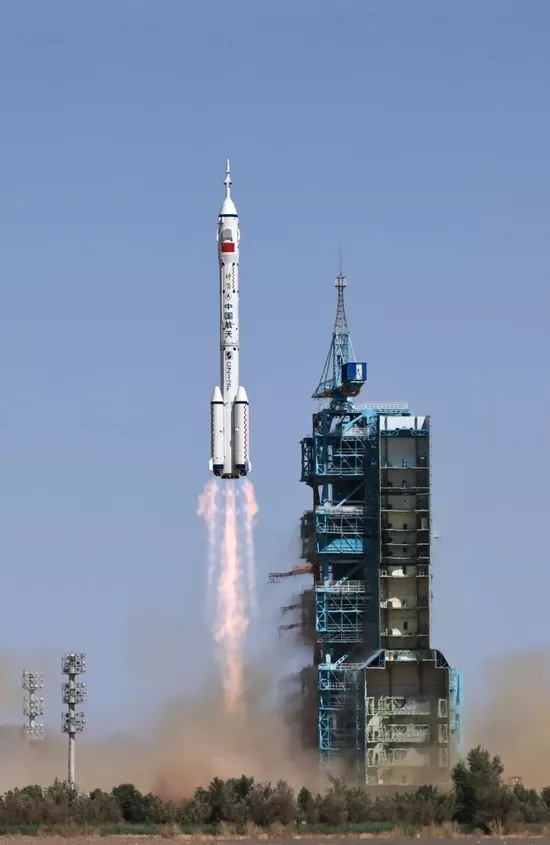
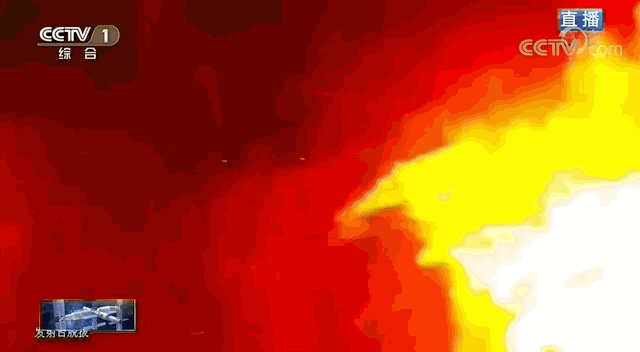

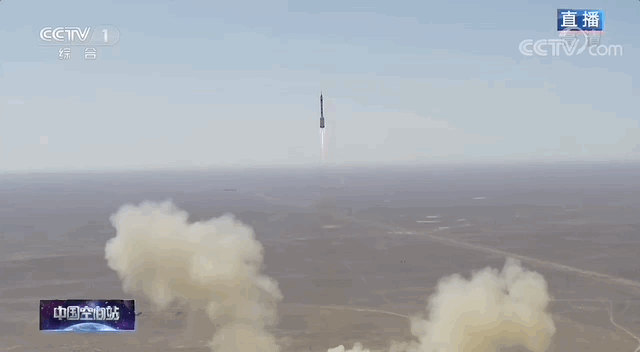
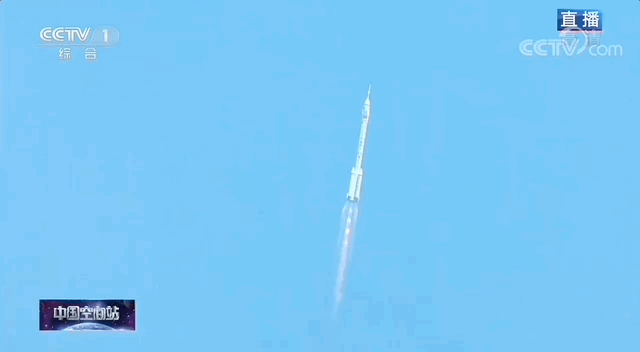
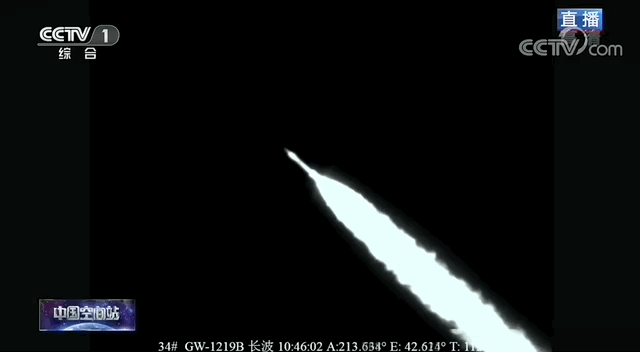
◆ this is the 23rd flight mission since the initiation and implementation of China's manned space project, and also the third manned flight mission in the space station phase
◆ after the spacecraft enters orbit, it will conduct autonomous rapid rendezvous and docking with the space station assembly according to the predetermined procedure. Subsequently, the astronauts will enter the space and core module, start the six-month on orbit stay, and carry out space station platform maintenance and care, manipulator operation, out of module activities, module transfer and other work, as well as space science experiments and technical tests.
◆ at present, the space station assembly has entered the docking orbit and is in good condition, meeting the mission requirements for rendezvous and docking with Shenzhou 14 and the conditions for the entry of astronauts
◆ what are the missions of Shenzhou 14? What are the main tasks of the flight crew? See below for details
The Shenzhou 14 flight crew consists of astronauts Chen Dong, Liu Yang and caixuzhe. Three astronauts will enter the core module and stay in orbit for six months. This is the construction phase of China's space station. It is the second flight mission after the successful launch of Tianzhou 4 cargo spacecraft in may2022, and it is also the first manned flight mission of this phase. The assembly and construction of the space station will be completed in orbit. Since 1992, when the "three-step" development strategy for the implementation of the manned space project was made, Shenzhou 14 is now ready to go. The Chinese dream of flying into the sky extends further into the sky.
What are the Shenzhou 14 missions? What are the main tasks of the flight crew?
01
During the Shenzhou 14 mission
The national space laboratory will be built
Linxiqiang, spokesman of China's manned space engineering and deputy director of China's manned space engineering office, said at the Shenzhou 14 manned mission press conference on the 4th that during the Shenzhou 14 mission, the Tiangong space station with the basic configuration of the Tianhe core module, the sky inquiry experimental module and the dreamsky experimental module will be fully completed, and the national space laboratory will be built. Among them, the sky asking experimental module is mainly for space life science research, and the dreamsky experimental module is mainly for microgravity science research.
Linxiqiang said that as a national space laboratory, 25 scientific experiment cabinets can be deployed in the module of the Chinese space station. Each cabinet is a small space laboratory, which can support the development of single discipline or interdisciplinary space science experiments, reaching the international advanced level as a whole.
Linxiqiang said that the sky inquiry experimental module is mainly oriented to space life science research. It is equipped with experimental cabinets such as life ecology, biotechnology and variable gravity science. It can support the research on the growth, development, genetics, aging and other response mechanisms of various plants, animals and microorganisms under space conditions, as well as the experimental research on closed ecosystems. It also supports the research on molecular, biological and biological mechanisms through a variety of online detection means such as visible light, fluorescence and microscopic imaging The multi-level biological experimental research on cells, tissues and organs also supports the comparative study of biological growth mechanism under different gravity conditions.
Linxiqiang introduced that the dreamsky experimental module is mainly oriented to microgravity scientific research. It is equipped with experimental cabinets in multi-disciplinary directions such as fluid physics, material science, combustion science, basic physics and aerospace technology test, and supports the research on the substance essence laws such as multiphase flow and phase change heat transfer under the cover of gravity, basic combustion process, material solidification mechanism, and advanced experimental research such as ultra cold atomic physics. At the same time, on the basis of tiangong-2 space cold atomic clock, the world's first set of space cold atomic clock group composed of hydrogen clock, rubidium clock and optical clock will be established to form a time-frequency system with the highest frequency stability and accuracy in space, and carry out frontier scientific research such as gravitational redshift and fine structure constant measurement.
In addition, a material exposure test device and a general test device for components and assemblies are arranged outside the cabin to carry out the extravehicular test projects. In the follow-up, the research facilities of the space Survey Telescope, which will fly in the same orbit with the space station, will be launched to carry out wide area sky survey observation.
Relying on the above-mentioned in cabin scientific experiment cabinet, out of cabin test device and sky survey space telescope, nearly 100 experimental research projects were arranged in the construction stage of the space station. After the space station is put into normal operation, it will also carry out large-scale scientific research, which is expected to effectively promote the breakthrough of major frontier scientific issues such as dark matter and dark energy, galaxy formation and evolution, the law of matter essence, the nature of life phenomena and the response and change law of human beings in space, as well as the sustainable development of the earth, so as to provide profound scientific and technological accumulation for China's manned space exploration near and far away in the future.
02
China space station will add "Star" components
Mechanical arm
Lin Xiqiang introduced at the Shenzhou 14 manned flight mission press conference on the 4th that a small mechanical arm will be equipped for the follow-up launch of the sky asking experimental module. The space station is equipped with two large and small mechanical arms, which have their own emphasis on division of labor and cooperate with each other, and can meet the needs of space station tasks.
Compared with the large manipulator that has entered the orbit with the sky and the core module, the small manipulator has the following three outstanding characteristics:
First, it is more exquisite. The weight and length of the small mechanical arm are about half of that of the big arm, and the load capacity is about one eighth of that of the big arm. The corresponding target adapter is also more lightweight, and the movement and control of the small arm are flexible.
Second, it is more accurate. The end positioning accuracy of the forearm is higher, and the position accuracy and attitude accuracy are better than that of the boom. It can complete fine operations with higher accuracy requirements.
Third, it can work in cascade with the boom, that is, the small mechanical arm can be grabbed by the large mechanical arm to form a combined mechanical arm. The coverage of extravehicular operations is wider, and the needs of fine operations to different locations can be met through large-scale transfer.
Linxiqiang said when introducing the tasks undertaken by the small manipulator:
First of all, similar to the large manipulator, the small manipulator is connected and switched through the target adapter, which can realize independent extravehicular crawling and complete tasks such as astronaut extravehicular activity support and extravehicular status inspection.
Secondly, the small manipulator can give full play to its own delicate and accurate characteristics to complete the fine operations such as the installation, maintenance and care outside the cabin of various loads and platform equipment with higher accuracy requirements.
The small mechanical arm can also be cascaded and combined with the large mechanical arm through the combined arm adapter, so as to realize the large-scale operation of astronauts and loads. For example, the equipment that needs to be installed outside the cabin can be uplifted to the cargo airlock of the dreamsky module through the cargo spacecraft, and the installation on the extravehicular load platform can be completed through the grasp and transfer of the combined arm.
In addition, large and small mechanical arms can cooperate to carry out extravehicular operation tasks, and can also complete self maintenance of mutual patrol and mutual inspection, effectively improving the reliability of the mechanical arm system.
03
What are the new missions for astronauts?
9 types of combination configurations, 5 rendezvous and docking... The Shenzhou 14 crew has a complex and arduous task.
Huangweifen, chief designer of the astronaut system of China's manned space project and researcher of China's astronaut research and training center, said in an interview with Xinhua News Agency:
This year we will have two manned missions, one during the construction phase of our space station. The Shenzhou 14 flight crew will perform the first manned mission during the construction phase of the space station. It is of great significance and is very difficult for them.
During the six-month flight, the astronauts have to experience extremely complex flight conditions, including 9 combinations, 5 rendezvous and docking, 3 separation and evacuation, and 2 transposition missions. In this process, they should monitor the status, and implement manual control operation for rendezvous and docking when necessary; It will also be the first time to enter the two experimental modules, the sky asking module and the dreamtime module, to complete the establishment of the manned environment; We will also complete the unlocking and installation of more than a dozen scientific experiment cabinets in these two cabins; And daily assembly, construction, maintenance and repair.
It is worth noting that they will use the airlock for the first time. We plan to do 2 to 3 times of extravehicular activities, which is the first time to use the small mechanical arm of the sky inquiry experimental module to carry out extravehicular activities. After that, the combined arm of forearm and forearm will be used for out of cabin activities. These are all new states, which are very challenging for astronauts. They will also teach in space and carry out other space education activities and public welfare activities.
Therefore, the mission of the Shenzhou 14 crew this time is extremely complex, and the requirements for the astronauts' emergency and fault handling capabilities are also higher than before.
Listen to the introduction of the three astronauts of "Shenzhou 14":
According to the plan, the Chinese space station will complete the basic configuration of T-shaped construction by the end of this year. The space for activities in the module will exceed 110 cubic meters. It will be equipped with two astronaut exit hatches and one cargo airlock, and will provide six sleeping areas and two health areas. It can realize the long-term residence of three people and short-term residence of six people. The more perfect functions not only provide a more comfortable environment for astronauts, but also bring more tasks.
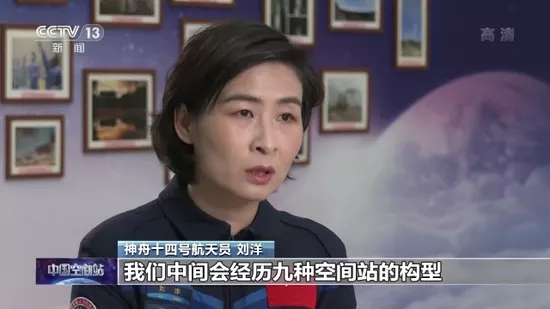
Shenzhou 14 astronaut Liu Yang: among us, we will experience nine space station configurations, including five rendezvous and docking, three evacuations, two transposition experiments, and mechanical arm experiments. The three members of our crew are backup to each other in terms of personal task division and ability.
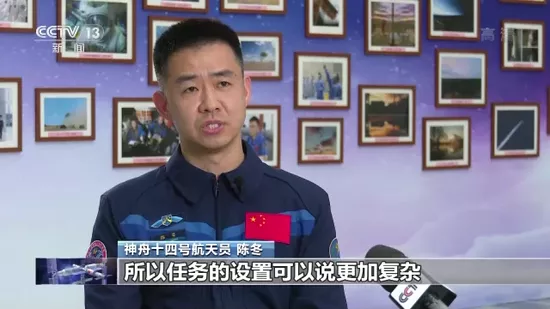
Shenzhou 14 astronaut Chen Dong: so the task setting can be said to be more complex. That is why we have prepared for two and a half years. Wentian also has three sleeping areas, a health area, and the entire backup of the environmental control and regenerative life support system. These are all for us to set up. We also need to use the air lock of Wentian module for out of the module activities.
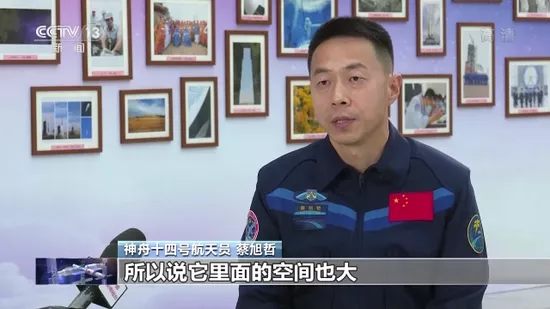
Caixuzhe, the astronaut of Shenzhou 14: after we went to the sky inquiry experimental module, there was a special airlock module with a door of 1 meter. The door of the node module in front was 85 cm, so it had a large space.
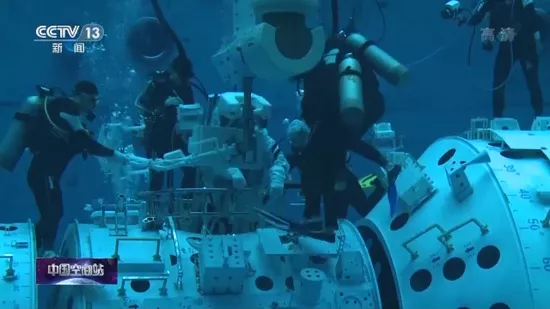
In the future, the dreamsky experimental module will also have a dedicated cargo airlock. Using the manipulator, astronauts can transfer the space experimental load out of the module without leaving the module.
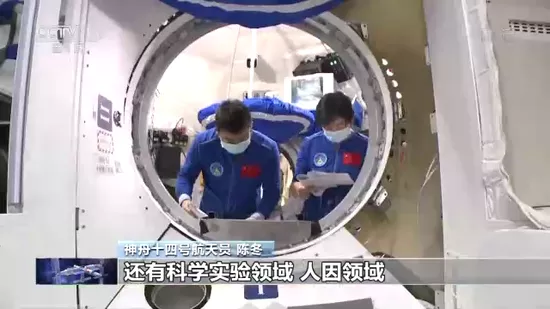
Shenzhou 14 astronaut Chen Dong: there are many scientific experiment cabinets for Wentian and Mengtian. We need to do a lot of space science experiments on them, including space science, medical experiment, medical field, scientific experiment field, human factor field and astronaut system field. In addition to our experiments on December 13, we will have a continuation, and we will also have new experimental projects.

The scientific experiment cabinets carried in the Wentian and Mengtian experimental modules undertake a large number of internationally leading scientific experiment tasks. More equipment and frequent use will also increase astronauts' work in equipment maintenance and repair.
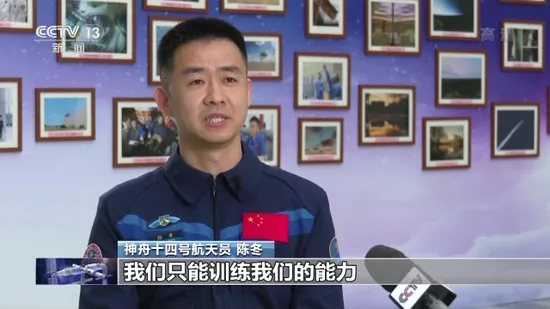
Shenzhou 14 astronaut Chen Dong: because there are too many equipment, we can only train our ability and maintenance ability. We have this ability, so this is also the advantage of manned spaceflight. We have astronauts and we have people.
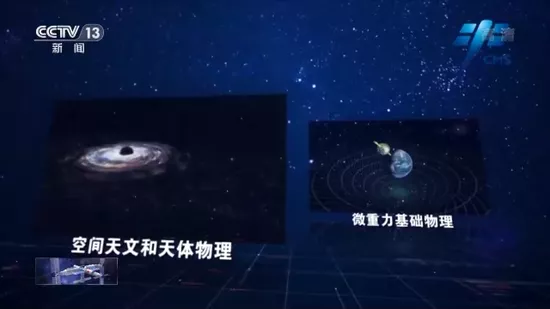
In addition, according to the mission plan, Shenzhou 14 will continue to carry out a series of on track science popularization activities such as "Tiangong classroom" and present richer content.
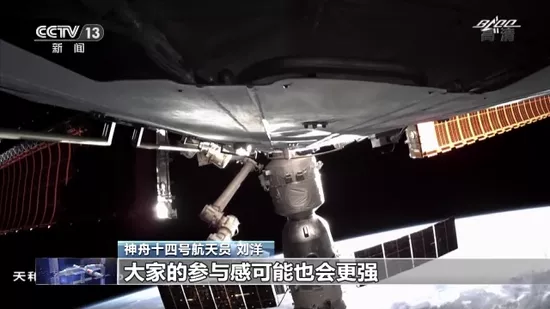
Shenzhou 14 astronaut Liu Yang: the Tiangong classroom is a series of activities of our space station. In the future, each crew will carry out a large number of popular science activities, which will be different from the previous scientific experiments. I think the future Tiangong class may be more interactive, and everyone may have a stronger sense of participation.
Source: CCTV news
Background link
Key technology verification stage of China Space Station
What results have been achieved?
The construction of China's space station is divided into two stages: key technology verification and construction.
Prior to that, the whole line of the project successfully completed six flight missions, including the first flight of the long march 5B carrier rocket, the core module, two manned spacecraft and two cargo spacecraft, as planned. The mission objectives of the key technology verification phase of the space station were fully realized, laying a solid foundation for the assembly, construction and long-term operation of China's space station.
The main goal of the space station key technology verification stage is to comprehensively break through the key technologies of the space station construction and operation. The overall project of the space station and relevant systems of the project have made a comprehensive and systematic assessment on the work of the key technology verification stage from the aspects of key technology verification, functional performance verification of each system, organization and command, operation management, etc., and it is considered that:
Eight key technologies such as astronauts' long-term on orbit stay, regenerative life support, flexible solar cell wings and driving mechanism have been effectively verified;
The core module is in good operating condition in orbit, with normal functional performance, all indicators meet the requirements, and has the conditions to support the assembly and construction of the space station;
The functional performance and reliability of manned spacecraft, cargo spacecraft and Long March II F, long march VII and long march 5B launch vehicles have been further examined and verified to meet the requirements of follow-up missions;
The astronaut system has established an effective and complete crew selection and training system as well as an on orbit health, work and life support system for astronauts, which can better support the implementation of follow-up missions;
The basic functions and core key technologies of the application mission have been verified in orbit, and have the ability to carry out space applications and experiments;
All ground systems meet the requirements for the construction and long-term operation of the space station;
The project has initially formed a stable and efficient space station operation management, organization and command system with Chinese characteristics, and has the ability to implement follow-up tasks.